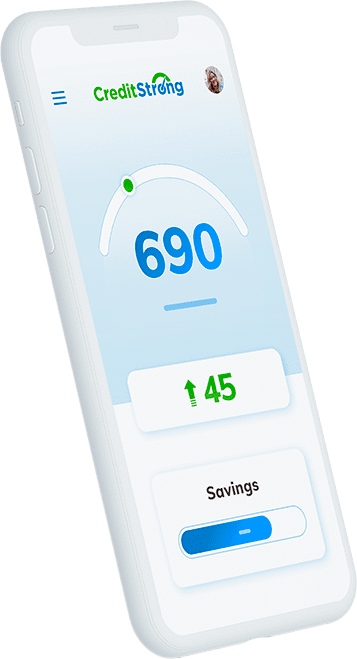FICO Score vs. Credit Score: What’s the Difference?

Build strong credit
while you save

Many aspects of the credit scoring system in the United States have remained virtually unchanged since the start of the 1990s, but it’s still a source of confusion for many Americans. In fact, roughly 40% of consumers report having no idea how credit scores work.1 The difference between FICO® Scores and credit scores is a common area of misunderstanding. Here’s what you should know on what sets the two apart.
What Is a Credit Score?
Credit scores are numerical representations of how likely a borrower is to repay their debts in-full and on-time. They’re the results of sophisticated algorithms designed to help creditors decide whether or not to lend to prospective borrowers.
Generally, a higher credit score indicates a history of managing credit responsibly. Having a credit score increases the likelihood that you’ll be able to qualify for more debt, though standards vary significantly between creditors and credit account types.
Conversely, a lower credit score shows that you’ve mishandled your credit in the past or have a limited credit history. It’s also possible to have no score if your borrowing history is insufficient to assess your habits.
Having a low or nonexistent credit score makes it harder to qualify for new credit accounts. However, more options are typically available to borrowers with thin credit profiles than to borrowers with a bad credit score because of a historical poor repayment history.
There are many different types of credit scores, as providers create them to serve different purposes. For example, some measure consumer credit risk, while others are designed to assess businesses.
What Is a FICO Score?
FICO is short for the Fair Isaac Corporation. It’s the company responsible for creating the consumer credit score that’s most popular among lenders, known as FICO Score 8. That’s what most parties are referring to when they reference your FICO score.
FICO Score 8 is the company’s eighth version of a credit score designed to assess a consumer’s general creditworthiness. In other words, it doesn’t focus on any particular credit product or industry.
While FICO Score 8 is the most popular version of the company’s generic score, it’s not the most up-to-date. FICO released the ninth iteration of the product in 2014, and some creditors are gradually switching to it.
Though the algorithms behind the two scores are very similar, the newer version was adjusted to improve its accuracy. For example, FICO Score 9 considers your rental payment history if you report it to the credit bureaus.
Most FICO scores, including FICO Score 8, fall between 300 and 850. A higher score is better, and the average was 714 in 2021. Within that range, FICO uses the following subsidiary categories:
- Above 800: Exceptional
- 740 to 799: Very good
- 670 to 739: Good
- 580 to 669: Fair
- Below 579: Poor
Notably, some of the other FICO scores use different ranges. For example, its industry-specific scores range from 250 to 900, including the FICO Auto Score for auto lenders and the FICO Bankcard Score for credit card companies.
Learn More: Credit Score Statistics
The Difference Between the Two
FICO scores are a type of credit score, so the only difference between the two terms is their level of specificity. FICO scores are credit scores that use algorithms created by the Fair Isaac Corporation.
After FICO scores, VantageScores® are the most popular type of credit score. The three major credit bureaus, Experian, Equifax, and TransUnion, founded Vantage Scores in 2006 to make credit scores more accessible to consumers.
Though the company has released the fourth version of its algorithm, VantageScore 3.0 is still the most popular VantageScore credit score. When you check your credit score using sites like Credit Karma or Credit Sesame, that’s what you’ll usually see.
The VantageScore credit scoring model is slightly different from a FICO score, but not so different that your score will be good in one and poor in the other.

How Is Your FICO Score Calculated?
Fortunately, FICO shares the broad strokes of the algorithm behind its credit scores. Here’s what you should know about the five primary scoring factors, including what they are, how they work, and how heavily they impact your score.
- Payment history: The degree to which you’ve made your monthly payments on time in the past is the best indicator of whether you’ll do so in the future. As a result, it’s the most significant factor affecting your credit, worth 35% of your FICO score.
- Amounts owed: Consumers have limited incomes and can only afford to take on so much debt before payments start slipping through the cracks. So, your outstanding debt balances are the second most impactful factor in your credit, worth 30% of your FICO score.
- Length of credit history: The more experience you have managing credit, the more likely you’ll develop better skills. Therefore, your score benefits when your credit accounts are older. The factor is less impactful, though, accounting for 15% of your FICO score.
- Credit mix: Lenders want to know that borrowers have experience managing multiple accounts and debt types, but it’s one of the less significant variables in the algorithm. It’s worth 10% of your FICO score.
- New credit inquiries: Applying for too many credit accounts at once can indicate to lenders that you’re under financial strain. However, there are many other reasons to apply for new credit, making it worth 10% of your FICO score.
Most FICO scores generally follow this same basic formula, but there are subtle differences between the generic and industry-specific scores.
How Can I Improve My Credit Score?
If you want to build credit, the first step is to get your credit report from each major credit bureau and double-check that the information inside them is accurate.
Unfortunately, the credit bureaus do make mistakes, and one can easily harm your credit score. If you find any, dispute the information with the credit reporting agency responsible for issuing the report.
Next, focus on acquiring a diverse set of credit accounts. There’s no perfect mix, but you should aim to have revolving accounts like credit cards and installment debts like auto loans or a credit builder loan.
Generally, revolving debts are the easiest to manage. If you’re new to credit or have a bad credit score, the best credit cards won’t be accessible.
Instead, consider starting with a secured credit card. The credit card issuer will require you to give them cash equal to your credit limit as collateral, but they’re easier to qualify for than unsecured accounts.
Most loans are too expensive to take out for credit-building purposes. If you don’t have one already, credit builder loans like CreditStrong’s are often the best way to add installment or revolving debt into your credit mix.
Like secured cards, they use collateral to secure the account, making them available to FICO borrowers without a good credit score. However, they use the loan proceeds so you don’t have to bring cash to the table, then release the funds at the end of the loan term.
Once you have a healthy credit mix, focus on making all your monthly debt payments on time. Even a single late payment can have a significant negative impact on your score.
In addition to establishing a positive payment history, making timely payments should help you pay down any outstanding balances.
Finally, keep your credit card debt well below your credit limit. Your debt balance divided by your total available credit equals your credit utilization ratio, and your score will benefit the most if you keep it between 1% and 10%.
FAQs
Is a FICO Score Better Than a Credit Score?
A FICO score isn’t better than a credit score because it is a credit score. It refers to the many scores the Fair Isaac Corporation has created, including its generic and industry-specific versions.
That said, FICO scores are the most popular type of credit score among creditors. If you want to see the same three digits that your future lender will use to assess your creditworthiness, you’ll often need to get a copy of your FICO Score 8.
Why Is My FICO Score Lower Than My Credit Score?
The two most popular providers of consumer credit scores are FICO and VantageScore. Lenders typically use FICO scores to assess your creditworthiness, but most companies that give you free copies of your score share your VantageScore 3.0.
The algorithms used to calculate the two types of scores are different, which may be why your FICO score is lower than the score you see elsewhere.
Another reason your credit scores can vary between providers is that they may base your score on different credit reports. The information in your Experian, Equifax, and TransUnion files isn’t always the same.
Do Lenders Use FICO Scores or Other Credit Scores?
Generally, lenders usually prefer to use FICO scores over other credit scores. FICO claims that over 90% of top lenders use its products to assess borrower creditworthiness, with FICO Score 8 being the most popular.
As a result, you may want to check your FICO score to confirm your credit rating before applying for new credit. However, your VantageScore® should be accurate enough to track your score if you’re just monitoring it for changes.
Is a FICO Score the Same as a Credit Score?
A FICO score is a type of credit score. In fact, it’s the most popular type, so it’s often what third parties are referring to when they reference your credit score. More specifically, they usually use your FICO Score 8, the provider’s most popular product.
After FICO scores, VantageScores are the most popular type of consumer credit score. Its flagship product is VantageScore 3.0. Lenders don’t use it as often, but it’s what you typically get when you check your credit score using sites like Credit Karma.
1. https://www.cnbc.com/2019/01/04/about-4-in-10-americans-have-no-idea-how-credit-scores-are-determined.html
CreditStrong helps improve your credit and can positively impact the factors that determine 90% of your FICO score.
